For visitors to my website, my “Build of the Month” (BOTM) Series was created to help those who are trying to get started in building their own Radio Controlled (RC) Model Aircraft.
"Aerofred.com" and "Outerzone.co.uk" are two of my favorite web sites to obtain free RC model airplane plans for my new builds. Additionally, they like to post images of Builder's models, and both sites have posted my RC model images and build descriptions under the heading of the associated aircraft model. Other good sources for free plans are: "Hip Pocket Aeronautics Builders' Plan Gallery", "Vintage & Old-Timer RCM Free Plans", "James Hatton Blog Free Plans and Articles", "Hlsat Blog RCModeler Free Plans and Articles", and "Don Dewey Memorial RCM Plans Collection."
If you are currently not an active builder, and you would like to be, my BOTM Series is a great place to start. If you have an RC model aircraft that you would like to see featured in this section or feel others may find interesting, please let me know and I will make every attempt to find scratch build plans, photos, and maybe even a published build article, which I will then post in a future BOTM edition. Just send me an email @: Build of the Month.
Click on any link below to jump to that BOTM Edition
July 2024 — SIG RC-70 Tri-star
June 2024 — Great Planes Trainer 60
May 2024 — Bowlus Baby Albatross
April 2024 — RCM Miss Vintage
March 2024 — Pica Waco YMF Golden Age Biplane
February 2024 — F-22 Raptor “Foamy”
January 2024 — Pilot Quick Build Series Piper Cub J-3
December 2023 — RCM New Era III
November 2023 — RCM Big Bird and Big Bird 2
October 2023 — Douglas XTB2D-1 Skypirate
September 2023 — Ben Buckle Diamond Demon
August 2023 — Clancy Speedy Bee
NOTE - You can view all images in a “Spotlight Box” by simply clicking on any image.
Build of the Month Series - July 2024 Edition
I hope you enjoyed last months BOTM edition on the Great Planes Trainer 60 RC model. If you have an RC model that you would like to see featured in this section or feel others may find interesting, please let me know and I will make every attempt to find scratch build plans, photos, and maybe even a published build article, which will then post in a future edition. Just send me an email @: Build of the Month.
Ok, now lets see what I have for the month of July 2024. How about something a little different. We want a Balsa RC model that will catch the eye of everyone at the flying field, be simple to build and fly, can be built as electric or glow powered, and will not be hard on your wallet. So given these requirements, this month features the SIG RC-70 Tri-star a unique model designed by LeRoy Satterlee.
Images Souce: Outerzone Tri-Star Webpage.
For those who enjoy a step away from the ordinary, SIG Mfg. Company produced something truly different in the form of the Tri-Star, a unique model in more ways than one. The most obvious departure is the canard configuration, but it goes much further than this. Builders can choose to build it as a glow-powered model, an electric-powered model, or even a slope glider. The SIG Tri-Star kit is no longer in production, but vintage kits occasionally appear for sale. Some enthusiasts have sold NIB (New-In-Box) kits, which are highly sought after by collectors. An example build of the SIG Tri-Star in a link provided further down used the following components: Engine: O.S. .15A; Propeller: Zinger 7x4 pusher; Engine Mount: Dave Brown; Fuel tank: Sullivan 4 oz. flextank; Servos: HS-81 (elevator), HS-225MG (elevator), and Futaba 3004 (ailerons); Battery: 800mah NiMH; Rx: Futaba FP-R148DF; Switch: MPI; Covering: UltraCote plan on the USAF version.
Quote: "ELECTRIC: In the larger metropolitan areas, finding, and keeping, flying sites is getting more and more difficult. Housing development, noise regulations, sports complexes, all fuel the battle for use of available recreational space. An electric Tri-Star can be flown in any local schoolyard or park without most people even knowing it's there. Performance of any electric airplane is the result of careful matching of the battery/motor/propeller combination. Feel free to use any combination you choose.
CANARD: Canards have a unique look that can be distinguished from anything else in the sky, and contrary to some stories, are quite stable. They resist stalling more than other aircraft designs but are still quite aerobatic.
GLOW POWER: Tri-Star makes a delightful glow powered airplane and has been tested with engines in the .09 to .15 sizes. There are some engine size limitations however. ENGINES LARGER THAN .15 SIZE ARE NOT RECOMMENDED for Tri-Star. The additional weight added to the rear of the airplane can cause a very tail heavy and unstable aircraft. For the safety of yourself, and others, resist the temptation to install a .40, or even a .25 in your Tri Star. Remember, nose heavy airplanes may fly poorly, but tail-heavy airplanes seldom fly at all.
SLOPE SOARING: If you are not into powered flight of any kind but are hooked on the wonderful sport of slope soaring, the SIG Tri-Star is for you too. Tri-Star makes a nifty slope soarer which is very light and can be flown in light winds. The unique plastic belly pan provides an excellent spot for the addition of ballast for those windier days, so now, you can fly no matter how hard the wind blows.
RADIO EQUIPMENT: The Tri-Star requires a two, or three channel radio system, depending on the version you choose to build. Both powered versions require elevator, aileron, and throttle. The slope soaring version requires elevator and aileron only. There are no fancy mixers required, and Tri-Star is designed to accept standard size components..."
- Model Specifications:
- Wing Span: 47.5″
- Total Wing Area: 420 square inches
- Canard Span: 20″
- Fuselage Length: 35″
- Number of Channels: 4 - ailerons, elevator, rudder and throttle
- Weight: approx. 29-32 oz. glow; 42-48 electric
- Glow Fuel Engines: 0.09 - 0.15 two-stroke
- Electric Powered: .05 Size, Output of 200 to 300 Watts, 33 to 45 amp ESC, 3-cell 45C LiPo pack of around 1500 to 2200mah.
Here is a link to an excellent Tri-Star build forum: “SIG Tri-Star Build - RCU Forums (rcuniverse.com).” It has lots of good pictures and build information.
This model can be scratch built off a great set of plans, instruction manual, and article which are all available from: “Outerzone.”
Outerzone SIG Tri-Star Webpage.
For those who like this model, you might just want to check out this link: “SIG Model Aircraft Kit and ARF Production History.” This site covers just about everything when it comes to SIG. Check it out!
I hope you have enjoyed this months selection, and just maybe, I have spurred some interest in trying your hand at building an RC model airplane.
Until next month - Keep the Balsa Dust Flying!!
Build of the Month Series - June 2024 Edition
I hope you enjoyed last months BOTM edition on the Bowlus Baby Albatross RC model. If you have an RC model that you would like to see featured in this section or feel others may find interesting, please let me know and I will make every attempt to find scratch build plans, photos, and maybe even a published build article, which will then post in a future edition. Just send me an email @: Build of the Month.
Ok, now lets see what I have for the month of June 2024. Since the main purpose of my BOTM Series is to help newcomers to the hobby of RC flying, how about we try another trainer. Anyone that has been to an RC flying field has seen this GREAT RC model at least once. Given its low speed and gentle handling characteristics, many RC modelers have learned how to fly using this RC model, including myself. So given these requirements, this month features the Great Planes Trainer 60 a classic design by Joe Bridi.
Images Source: Outerzone Great Planes Trainer 60 Webpage.
This large trainer offers excellent visibility in the air, making it easier for beginners to track during flight. Its stability, self-righting flight characteristics, and straightforward assembly make it an ideal choice for those learning to build and fly model airplanes.
Joe Bridi designed the all-wood Trainer 60 for .40 to .60 CID glow engines, and the design was subsequently acquired and kitted by Great Planes Model Manufacturing Co. The 65″ wingspan model features “no tricks” design and construction throughout with its thick symmetrical wing airfoil, constant chord wing planform, and generously sized ailerons, elevator, and rudder surfaces. It's a simple build, going together a bit like a classic “Stik” design, a thick wing design which is stable and will slow down for landing, but being symmetrical it will still loop, roll and spin.
If built with careful attention paid to alignments and weight control, the Trainer 60 would be suitable for 4-stroke engines or electric propulsion of the proper wattage rating. Optional floats shown on the plans would augment the design's tricycle landing gear.
- Model Specifications:
- Wingspan: 65″
- Total Wing Area: 764 square inches
- Number of Channels: 4 - ailerons, elevator, rudder and throttle
- Weight: approx. 6-7 pounds depending on power system used
- Glow Fuel Engines: 0.40-0.60 two-stroke, 0.54 four-stroke
- Electric Powered: Output of 800 to 1200 Watts, 60 to 85 amp ESC, 4-cell to 6-cell 45C LiPo pack of around 5000 mah.
Here is a link to an excellent build series video: “Great Planes Trainer 60 Pt 1 - Great Set of Plans - Build Series - 65″ Wingspan RC balsa model by Mark Robinson”. This is a 19-part build series that will take you step-by-step through the construction of the Great Planes Trainer 60, culminating in a maiden flight, and followed by a build and flight review. The finished model is powered by a 2-stroke nitro engine. The build is a 4-channel RC, ailerons, elevator, rudder and throttle. A very well done video series. The model in the video is built from a great set of plans, instruction manual, and article which are available from: “Outerzone.”
Outerzone Great Planes Trainer 60 Webpage.
For those who like this model, but are not scratch builders, you might just want to check out this link: “Hanger One Kits.” They offer the RCM Trainer 60 in both a Short Kit and a Complete Airframe Kit. If you like the design but would like something a little smaller, then check out their 25 to 40 size version. Their website also has downloadable plans and construction articles. Another source for Short Kits can be found at this link: “The Balsa Workbench.” Check both of these sites out!
I hope you have enjoyed this months selection, and just maybe, I have spurred some interest in trying your hand at building an RC model airplane.
Until next month - Keep the Balsa Dust Flying!!
Build of the Month Series - May 2024 Edition
I hope you enjoyed last months BOTM edition on the Miss Vintage RC Model. If you have an RC model that you would like to see featured in this section or feel others may find interesting, please let me know and I will make every attempt to find scratch build plans, photos, and maybe even a published build article, which will then post in a future BOTM edition. Just send an email to Larry's BOTM Series.
Ok, now lets see what I have for the month of May 2024. While I have build many different kinds of Balsa RC models over the past 35+ years, one type that I have never attempted is a non-powered glider. Therefore, this month features the Bowlus Baby Albatross that was featured in a September 1975 Model Builder magazine.
The Bowlus BA-100 Baby Albatross is an American high-wing, strut-braced, open cockpit, pod-and-boom glider that was designed by Hawley Bowlus and introduced in 1938. Bowlus designed the Baby Albatross as an inexpensive glider during the Great Depression. The aircraft initially sold for US$750 ready-to-fly, and US$385 as a kit for amateur construction. Bowlus produced kits until the outbreak of World War II in 1942, and the rights to the design were purchased in 1944 by Laister-Kauffmann, although that company went out of business before commencing production. The BA-100 is of mixed construction. The wings and tail surfaces are of wooden structure, covered in aircraft fabric. The tail boom is made from a metal tube and the cockpit pod is of molded plywood. The wing is reminiscent of the German Grunau Baby design. The aircraft features no glide-path control devices, although some were later modified with spoilers. The airfoil is a modified Gö 535 section. The production of the BA-100 totaled 156 kits delivered. Many other modifications were carried out, including one Baby with a steel tube pod built by Schweizer. Many soaring notables had a Baby Bowlus as their first ship, including Dick Johnson, Dick Schreder and Joe Lincoln, and flights of more than 402 km / 250 miles have been made. One example belongs to the National Soaring Museum. The Vintage Sailplane Association has plans.
Full Size Aircraft General Characteristics & Performance:
Crew: one
Wingspan: 44′ 6″
Wing area: 150 sq. ft.
Gross weight: 505 lb.
Maximum glide ratio: 20:1
Rate of sink: 135 ft./min.
Wing loading: 3.3 lbs./sq. ft.
Image Source: Outerzone Bowlus Baby Albatross Webpage.
The Balsa RC model was designed by Col. Bob Thacker, is 2.75″ = 1′ scale, spanning 122″, and faithfully replicates the full-scale glider's design attributes. The two-piece wing attaches to the fuselage with iron rods running through each wing panel and the aluminum fuselage tail boom. Controls are ailerons, elevator, rudder, spoilers, and even a landing tire brake. A tow hook location for winch launching is not shown but could be easily installed. Other flying options include slope soaring and installation of electric propulsion in the nose - decidedly non-scale but easing the challenge of getting the plane aloft. For added robustness, the aluminum towel rack fuselage tail boom could be replaced with an unbreakable lightweight 1 inch O.D. fiberglass or carbon fiber boom.
Here is a link to an excellent build thread on RC-Network.de, that started on 7 February 2023 and runs to 23 January 2024: “Bowlus Baby Albatross.” This build thread will take you step-by-step through the construction of the Bowlus Baby Albatross model with dozens of very nice images. If I were to build the BA-100, this thread would be my number one source.
- Model Specifications:
- Wingspan: 122″
- Total Wing Area: 1,440 square inches
- Wing Chord: 11″
- Airfoil: modified Gö 535
- Fuselage Length: 52.5″
- Number of Channels: 5 - ailerons, elevator, rudder, spoilers, and landing tire brake
- Weight: approx. 7 - 8 lbs.
- Glow Fuel Engines: N/A
- Electric Powered: N/A - but model could be modified to use an electric powered system.
The Bowlus Baby Albatross can be built using a great set of plans and article which are available from: “AeroFred.”
AeroFred Model Builder's Bowlus Baby Albatross Webpage.
For those who like this style of model, but are not scratch builders, you might just want to check out this link: “PLANET-HOBBY Bowlus Baby BA-100 Albatross Wooden Construction Kit Gliding Model.” Check it out!
I hope you have enjoyed this months selection and maybe I spurred some interest in trying your hand at building an RC model glider.
Until next month - Keep the Balsa Dust Flying!!
Build of the Month Series - April 2024 Edition
I hope you enjoyed last months BOTM edition on the Pica Waco YMF Golden Age Biplane RC Model. If you have an RC model that you would like to see featured in this section or feel others may find interesting, please let me know and I will make every attempt to find scratch build plans, photos, and maybe even a published build article, which will then post in a future BOTM edition. Just send an email to Larry's BOTM Series.
Ok, now lets see what I have for the month of April 2024. As I indicated in an earlier edition, I tend to favor older aircraft for my scratch builds. So, for this edition I wanted to find something that was pre-WW 1, but not be too difficult for the RC scratch builder who does not have several builds under their belt. After some research on the web, I finally decided to go with something that is not true scale, but still results in a model that captures the style of the aircraft that were actually flying during the pre-WW 1 period. Therefore, this month features the George F. Jennings Miss Vintage that was featured in a 1976 Radio Control Modeler (RCM) magazine.
Images and Quote cited below Source:Outerzone Miss Vintage (oz4746) Webpage.
Quote: “Miss Vintage, designed around .25 to .35 size engines, George Jennings vintage type aircraft will help you capture the yesteryear of aviation...a time when aviation was in its infancy before the airplane went to war. What romance those early machines must have wrought with flying wires singing, empennage vibrating and the smell of hot engine exhaust permeating the nostrils. Yes, that was really flying! Imagine what it must have been like to fly with no airspeed indicator, engine monitoring devices, or other modern-day instrumentation. Just a stick, rudder bar, throttle, deafening roar, and the sting of the wind in the face were all the pilot had to keep him company.
Those days are gone forever, and we can only thrill to the written accounts of those aerial pioneers or reconstruct such bold and daring ventures in our own daydreams. Unless we fly RC! Through the medium of RC, we can re-create such an exciting era.
Miss Vintage will help you capture that feeling, that romance, that return flight to nostalgia. Miss Vintage is a thoroughly tested and practical machine. Designed around the economical .25 to .35 sized RC engines, it duplicates the looks, slow, deliberate, flight characteristics and realism of an old-timer. It is completely reliable, easy to fly and designed to look complicated and yet be quick and economical to construct.
Wing construction is a snap with a high lift flat bottom airfoil for easy building on a flat surface. Half ribs and diagonal braces are used for strength as well as looks. They require very little time to install and, as a plus, you don't have to sheet the leading edge of the wing. Ailerons are of the simple and effective strip type, making the choice of three or four channels an easy one for the builder. Very little extra effort is required to add ailerons.
The fuselage is constructed almost entirely of hardwood. Fuselage sides are cut from 1/8″ Lite Ply and are almost as light as balsa with far greater strength. The open framework is built from 3/16″ square spruce which is also very light and strong. The only balsa contained in the fuselage is one bulkhead and the top block. The main advantage to this type of structure, in addition to its ruggedness, is economy!
The tail surfaces are primarily constructed of laminated spruce and provide protection from warping and, again, are economical to build as well as rugged and light. Finished with see-through covering, Miss Vintage is a real showstopper guaranteed to attract attention from fellow RC'ers and spectators alike.
Flying capabilities are extremely good. Miss Vintage is capable of many aerobatics including inverted flight and yet is very gentle and easy to fly. Because of the easy take-off and landing characteristics, Miss Vintage could be used as a trainer and first airplane. If you have built at least one RC plane and understand basic construction techniques, you can build Miss Vintage - so let's get started!”
Before beginning, it is best to secure all materials needed for the job. You can probably find most materials at your local hobby shop; however, some shops don't stock spruce and Lite Ply. These can be purchased directly from SIG or Balsa USA.
- Model Specifications:
- Wingspan: 59″
- Total Wing Area: 600 square inches
- Wing Chord: 11.25″
- Airfoil: Flat Bottom
- Wing Location: Shoulder Wing
- Fuselage Length: 35″
- Stabilizer Span: 18″
- Stabilizer Area: 130 square inches
- Number of Channels: 4 - ailerons, elevator, rudder and throttle
- Weight: approx. 4-4.5 lbs. depending on power system used
- Glow Fuel Engines: .25-.35 2-cycle
- Electric Powered: Output of 500-700 Watts, 60 amp ESC, 3 or 4-Cell 45C LiPo pack of around 4000mah.
The Miss Vintage can be built using a great set of Radio Control Modeler (RCM) plans, article, and a review which are available from: “Outerzone.”
Outerzone Miss Vintage Webpage.
For those who like this style of model, but are not scratch builders, you might just want to check out this link: “Hanger One Kits Miss Vintage.” They offer Miss Vintage in both a Short Kit and a Complete Airframe Kit. They also offer George F Jennings Aerotique (RCM 1981 and shown below) which is the follow-on sister to Miss Vintage. Their website also has downloadable plans and construction articles. To make building of the curved spruce tail pieces easy they have included some MDF formers which you can bend the spruce around for laminating. Simply soak the spruce, bend it around the formers and cable-tie it in place until dry. Then remove it and apply aliphatic glue and tie it back around the formers until dry. You will be rewarded with a very strong and good looking part. Check it out!
“Images Source: Hanger One Aerotique Webpage.
I hope you have enjoyed this months selection and maybe I spurred some interest in trying your hand at building a vintage style RC model airplane. FYI - I started my scratch build of Miss Vintage in March 2024.
Until next month - Keep the Balsa Dust Flying!!
Build of the Month Series - March 2024 Edition
I hope you enjoyed last months BOTM edition on the F-22 Raptor “Foamy” RC Model. If you have an RC model that you would like to see featured in this section or feel others may find interesting, please let me know and I will make every attempt to find scratch build plans, photos, and maybe even a published build article, which will then post in a future BOTM edition. Just send me an email @: Build of the Month.
Ok, now lets see what I found for the month of March 2024. Since starting the BOTM Series in August 2023, I have yet to feature a biplane. For the scratch builders, an RC biplane model means LOTS of wing ribs. I tend to be biased toward the Golden Age of aviation in the selection of the models that I scratch build, and such is the case with this months featured build. While there are many different designs and builders of biplanes to consider, there are only a couple that really stand out when it comes to a beautiful reproduction of the full size airplane. So given these requirements, this month features the Pica Waco YMF Golden Age Biplane.
Image Source:Outerzone Waco YMF-3 Webpage.
In the mid-1930s, Waco was one of the most successful builders of personal and business airplanes in the country. Wacos were powerful, fast and a delight to fly, and they were expensive. That’s why pilots coveted the graceful biplanes then, and now. Waco — pronounced wah-co, not way-co like the city in central Texas — The name evokes images of the Golden Era of Aviation when real planes had two sets of wings and round engines. The Weaver Aircraft Company (WACO) was founded in 1920 by two businessmen, Elwood Junkin and Clayton Brukner, along with two famous barnstorming pilots Charley Meyers and George Weaver. The plane's barnstorming heritage was very evident in its beautiful lines and aerobatic abilities. The sturdy airframe soon earned the Wacos a reputation as rugged and reliable airplanes. Wacos were sought after by traveling businessmen, world explorers, and even the postal service. In the early years, Waco built dozens of models of biplanes, probably no two exactly alike. The company was among the first to offer a fully enclosed cabin biplane designed for purposeful transportation. By 1935 it created the YMF, what many pilots believe to be the most beautiful and desirable sport airplane ever built. That is the model that is back in production now by Waco Classic Aircraft. The full size Waco YMF-3 has a wingspan of 30 feet and a length of 23 feet 1 inch. The aircraft has a height of 8′ 5″ and an empty weight of 1,155 pounds. The fuel capacity of the aircraft is 48 gallons, and it has a useful load of 965 pounds. The Waco YMF-3 is powered by a Jacobs R755A2 engine that produces 300 horsepower. The aircraft has a two-blade MT constant speed propeller. The wing area of the YMF-3 is 233.5 square feet. The Waco YMF-3 has a maximum speed of 95 mph indicated (102 mph true).
The Golden Era of Aviation will come alive with this gentle flying RC model of the popular Waco YMF. PICA produced the YMF-3 in 1/5th (72-inch wingspan) and 1/6th (60-inch wingspan) scale kits. These are the perfect size to attract the attention and admiration of your fellow modelers. Responsive control gives this model realistic maneuverability in all aspects of flight. Since the real aircraft has all of the necessary areas and moment for an excellent flying model, the PICA plans produce a 100% scale outline. The large wing area provides a stable platform for smooth picture-perfect takeoffs and landings. The all balsa wood and light plywood build PICA plans feature step by step instructions with positional isometric drawings, detailed full-size plans, built up tail surfaces, and use a Clark-Y airfoil. Remember what I said earlier about biplane models and the number of wing ribs? Well, there are a total of 66 ribs in the two wings of the 1/5th scale model. The finished RC model flies very realistically. It can be competitive in stand-off scale and would be great for a modeler wishing to get involved in competition.
- 1/5th Scale Model Specifications:
- Wingspan: 72″
- Total Wing Area: 1,530 square inches
- Wing Chord: 11.5″
- Fuselage Length: 54″
- Stabilizer Span: 25″
- Stabilizer Area: 185 square inches
- Number of Channels: 4 - ailerons, elevator, rudder and throttle
- Weight: approx. 12-13 lbs. depending on power system used
- Glow Fuel Engines: .61-.90 2-stroke; .90-1.2 4-stroke
- Electric Powered: Output of 1200-1800 Watts, 80-100 amp ESC, 6-Cell 45C LiPo pack of around 5000mah or greater.
The Waco YMF-3 Golden Age Biplane can be built using a great set of Morten Tanger plans from PICA, , assembly manual, and review which are all available from: “Outerzone.”
Note - The 1/5th scale PDF plans file is a large file size since it includes 3 large sheets of the actual plan plus another 44 (yes, 44) A4 pages that show all (hand-traced) formers and include 15 pages of text instructions.
Outerzone Waco YMF-3 Webpage.
I hope you have enjoyed this months selection and maybe spurred some interest in trying your hand at building an RC model biplane.
Until next month - Keep the Balsa Dust Flying!!
Build of the Month Series - February 2024 Edition
I hope you enjoyed last months BOTM edition on the Pilot Quick Build Series Piper Cub J-3 RC model. If you have an RC model that you would like to see featured in this section or feel others may find interesting, please let me know and I will make every attempt to find scratch build plans, photos, and maybe even a published build article, which will then post in a future BOTM edition. Just send me an email @: Build of the Month.
Ok, now lets see what I have for the month of February 2024. While many of us are not “foamy” model aircraft builders, we do have some flying club members that build them from scratch. Given this, I figured I need to have a BOTM edition for a simple “foamy” RC model build. In our review of the Internet to find materials for this edition, one aircraft seems to be the choice of many modelers for a simple “foamy” build of one of our nations best jet fights. So, this month features a F-22 Raptor “Foamy” RC Model.
The Lockheed Martin/Boeing F-22 Raptor is an American single-seat, twin-engine, supersonic all-weather stealth fighter aircraft developed for the USAF. As a product of the USAF's Advanced Tactical Fighter (ATF) program the aircraft was designed as an air superiority fighter, but also incorporates ground attack, electronic warfare, and signals intelligence capabilities. The prime contractor, Lockheed Martin, built most of the F-22's airframe and weapons systems and conducted final assembly, while program partner Boeing provided the wings, aft fuselage, avionics integration, and training systems.
The F-22 Raptor is a fifth-generation air superiority fighter that is considered fourth generation in stealth aircraft technology by the USAF. It is the first operational aircraft to combine supercruise, super maneuverability, stealth, and integrated avionics (or sensor fusion) in a single weapons platform to enable it to conduct missions, primarily offensive and defensive counter-air operations, in highly contested environments. The aircraft's dual Pratt & Whitney F119 augmented turbofan engines are closely spaced and incorporate pitch-axis thrust vectoring nozzles with a range of ±20 degrees, and the nozzles are fully integrated into the F-22's flight controls and vehicle management system. Each engine has maximum thrust in the 35,000 lbf. class. Maximum speed without external stores is approximately Mach 1.8 at military power and greater than Mach 2 with afterburners. The ability to supercruise, or sustain supersonic flight without using afterburners, allows it to intercept targets that afterburner-dependent aircraft would lack the fuel to reach. The F-22 was designed to be highly difficult to detect and track by radar, with radio waves reflected, scattered, or diffracted away from the emitter source towards specific sectors, or absorbed and attenuated.
The F-22 first flew in 1997 and entered service in December 2005 as the F-22A. Although the USAF had originally planned to buy a total of 750 ATFs, the program was cut to 187 production aircraft in 2009 due to high costs, a lack of air-to-air missions at the time of production, and the development of the more affordable and versatile F-35. In total, 195 F-22s were built. The last F-22 was delivered in 2012. The United States Air Force is the only operator of the F-22, and as of August 2022, it has 183 aircraft in its inventory. On 4 February 2023, an F-22 of the 1st Fighter Wing shot down a Chinese spy balloon within visual range off the coast of South Carolina at an altitude of 60,000 to 65,000 feet (20,000 m), marking the F-22's first air-to-air kill.
This F-22 RC model is based on a design by Kosh, adapted for EPP by Dekan, and the plans are by Firetrappe. This scratch build is about as simple as you can get. You can download the F-22 Raptor plans and build your own RC model in just one night! The construction uses 9mm EPP, 3mm carbon tubes, 1.5mm carbon tube, and 3x0.5mm carbon strips. Expanded polypropylene (EPP) is a soft-elastic to hard, closed-cell and thermoplastic foam. EPP foam has a high structural strength at low weight and combines several positive mechanical properties, such as very good energy absorption and high resilience. In addition, it has excellent thermal insulation properties as well as good chemical resistance and the ability to absorb sound.
All the required materials are available at your local Hobby Shop, and from many sources on the Internet. The assembly requires a glue such as Bob Smith Industries BSI-142 Clear Foam-Cure Craft Glue, 4 oz. which gain can be found at your local Hobby shop, or on Amazon at: BSI-142 Glue. Do NOT use hot glue because it is way too heavy.
You can also install First Person View (FPV) equipment on this RC model.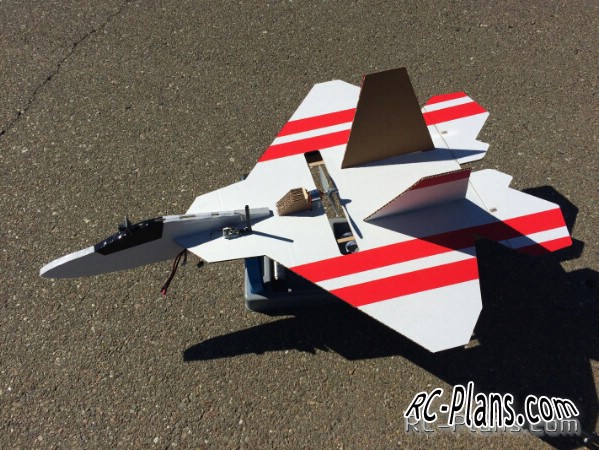
- Model Specifications:
- Wingspan: 28″
- Fuselage Length: 32″
- Number of Channels: 3 - Tailerons (1 for each), and throttle
- Weight: approx. 17-35 oz. depending on power system selected
- Glow Fuel Engines: N/A
- Electric Powered: 300-500 Watts, 1400KV 3S Brushless Motor swinging an 8-inch electric prop, 30A 2-3S Brushless ESC, 3-cell LiPo pack of around 1500mAh.
Here is a link to a good F-22 Scratch Build Time Lapse You Tube Video. The F-22 model in this months selection is built from a set of plans that I found at: “RC-Plans.com” and are provided for you below:
F-22 Plans in a .zip file.
F-22 Layout in a .PDF format.
Great Twisted Hobbies F-22 “foamy” Kit Review w/video.
Free F-22 Depron Plans with LOTS of Pictures
Construction Guide for Quick Build F-22 Raptor.
Set of F-22 “foamy” plans from AeroFred.
Super Easy F-22 Depron Detailed Build, Plans and Video.
I hope you have enjoyed this months selection and spurred some interest in trying your hand at building a “Foamy” RC model.
Until next month - Keep the “Foamy???” Dust Flying!!
Build of the Month Series - January 2024 Edition
I hope you enjoyed last months BOTM edition on the RCM New Era III Sport-Pattern RC model. If you have an RC model that you would like to see featured in this section or feel others may find interesting, please let me know and I will make every attempt to find scratch build plans, photos, and maybe even a published build article, which will then post in a future edition. Just send me an email @: Build of the Month.
Ok, now lets see what I have for the month of January 2024. How about I try our hand at something that will build quickly, flies great, and just about everyone that has ever been to an RC flying field has seen at least once. Given its low speed and gentle handling characteristics, many RC modelers learned how to fly using this RC model. So given these requirements, this month features the Pilot Quick Build Series Piper Cub J-3 designed by Y. Matsumoto.
Images Source: Outerzone Piper Cub J-3 Webpage.
The Piper J-3 Cub is an American light aircraft that was built between 1938 and 1947 by Piper Aircraft. The aircraft has a simple, lightweight design which gives it good low-speed handling properties and short-field performance. The Cub is Piper Aircraft's most-produced model, with nearly 20,000 built in the United States. Its simplicity, affordability and popularity invokes comparisons to the Ford Model T automobile. The aircraft is a high-wing, strut-braced monoplane with a large-area rectangular wing. It is most often powered by an air-cooled, flat-4 piston engine driving a fixed-pitch propeller. Its fuselage is a welded steel frame covered in fabric, seating two people in tandem. The Cub was designed as a trainer. It had great popularity in this role and as a general aviation aircraft. Due to its performance, it was well suited for a variety of military uses such as reconnaissance, liaison and ground control. It was produced in large numbers during World War II as the L-4 Grasshopper Many Cubs are still flying today, and Cubs are highly prized as bush aircraft. The aircraft's standard chrome yellow paint came to be known as "Cub Yellow" or "Lock Haven Yellow". The full size aircraft general characteristics are: capacity: pilot and one passenger; useful load: 455 lbs; length: 22′ 5″; wingspan: 35′ 3″; height: 6′ 8″; wing area: 178.5 sq. ft.; empty weight: 765 lbs; max takeoff weight: 1,220 lbs; and power plant: 1 – Continental A-65-8 air-cooled horizontally opposed four cylinder, 65 hp. at 2,350 rpm.
This RC model features simple built up construction using balsa and plywood which results in a light yet strong structure. The flat bottom airfoil wing can be built directly over the plans, and provides handling characteristics that make this model an excellent trainer plane. The full length ailerons are powered by a single center mounted servo, but you could modify the plans to incorporate separate aileron servos in each wing. The fuselage is a simple box construction which provides ample room for all the electronics and control servos, provided you use the smaller sized servos available today. The Pilot plans provide excellent details and include a third sheet with patterns of all the cutout pieces and a detailed parts listing. The model make use of many fuselage formers and side panels cut from 1/8th inch plywood stock, versus the stick built methodology found in other smaller RC models. The engine cowling can be made using either shaped balsa or fiberglass. The finished RC model flies very realistically. It can be competitive in stand-off scale and would be great for a modeler wishing to get involved in competition. The model is a great choice for a Sunday sport-scale flyer.
- Model Specifications:
- Wingspan: 56″
- Total Wing Area: 440 square inches
- Wing Loading: 18 ounces/sq. ft.
- Fuselage Length: 34.6″
- Number of Channels: 4 - ailerons, elevator, rudder and throttle
- Weight: approx. 53-57 ounces depending on power system used
- Glow Fuel Engines: 0.19 to 0.25 cubic inch 2-stroke or similar
- Electric Powered: Output of 400 to 500 Watts, 60 amp ESC, 3-cell 45C LiPo pack of around 3300-4000 mah.
Here is a link to an excellent build series video: “RC Piper Cub J-3 - Build Series - Balsa RC Planes. By Mark Robinson”. This is a 15-part build series that will take you step-by-step through the construction of the Piper Cub J-3, culminating in a maiden flight, and to be followed by a build and flight review. The finished model is powered by a 2-stroke nitro engine. The build is a 4-channel RC, ailerons, elevator, rudder and throttle. A very well done video series. The model in the video is built from a great set of plans from Pilot, construction guide, decals, and review, which are all available from: “Outerzone.”
Outerzone Piper Cub J-3 Webpage.
I hope you have enjoyed this months selection, and just maybe, I have spurred some interest in trying your hand at building an RC model airplane.
Until next month - Keep the Balsa Dust Flying!!
Build of the Month Series - December 2023 Edition
I hope you enjoyed last months BOTM edition on the RCM Big Bird and Big Bird 2. If you have an RC model that you would like to see featured in this section or feel others may find interesting, please let me know and I will make every attempt to find scratch build plans, photos, and maybe even a published build article, which will then post in a future edition. Just send me an email @: Build of the Month.
Ok, now lets see what I have for the month of December 2023. Lets try our hand at something that will build quickly, flies great, and won't break the bank. I also want to introduce a class of model that I have yet to cover in the BOTM Series, a low-wing sport-pattern airplane. This is not a beginner pilot's aircraft. Although a novice or higher might enjoy flying this aircraft at slow speeds, it can be very fast requiring the techniques of a more advanced pilot. So given these requirements, this month features the RCM New Era III designed by Don Dewey and updated by Joe Beshar.
Images Source: Outerzone RCM New Era III Webpage.
The RCM New Era III is a sporty, 45″ wingspan, small sport-pattern plane, originally designed by Chuck Cunningham and Don Dewey in 1969, but another version, the "New Era III Revisited", was modified and updated by Don Dewey and published in RCM Magazine in 1996.
- Model Specifications:
- Wingspan: 44.6″
- Wing Chord: 9 1/8″
- Total Wing Area: 400 square inches
- Fuselage Length: 39″
- Landing Gear: Tricycle
- Number of Channels: 4 - ailerons, elevator, rudder and throttle
- Weight: approx. 48-56 ounces depending on power system used
- Glow Fuel Engines: 0.19 to 0.25 cubic inch 2-stroke or similar
- Electric Powered: Output of 400 to 500 Watts, 60 amp ESC, 3-cell 45C LiPo pack of around 3300-4000 mah.
This model features built up construction using a well established method of balsa and ply construction that results in a light yet strong and rigid structure needed for a pattern model. The full symmetrical airfoil wing provides a high lift coefficient and excellent handling characteristics needed for a sport-pattern plane. One item I found very helpful in building full symmetrical wings is a simple wing jig. The jig holds the wing ribs above the plans and ensures all are properly aligned while the remaining wing structure is assembled. Provided in the link section below is an article from RCM so you too can make this very simple wing jig, and is pictured below when used to build a Bokkie model, a similar sport-pattern design. This RCM New Era III model grooves -- it goes exactly where you point it, and will do each and every maneuver that you call upon it to perform from sustained knife edge flight to vertical maneuvers of any type. Yet, you can slow it down, and drag it in nose high at a landing rate so slow that you will find it almost impossible to believe that it is still airborne.
Here is a link to an excellent build series video: “RCM New Era III Revisited - Build Series - Balsa RC Planes. By Mark Robinson.” This is a 19-part build series that will take you step-by-step through the construction of the New Era III model, culminating in a maiden flight, and to be followed by a build and flight review. The finished model is powered by an English made Irvine .25 Mk III, an excellent 2-stroke nitro engine. The build is a 4-channel RC, ailerons, elevator, rudder and throttle. A very well done video series. The model in the video is built from a great set of plans from RCM, and three articles which are all available from: “Outerzone.”
Outerzone New Era III Webpage.
RCM Wing Jig Article.
I hope you have enjoyed this months selection, and just maybe, I have spurred some interest in trying your hand at building a Sport-Pattern RC model airplane.
Until next month - Keep the Balsa Dust Flying!!
Build of the Month Series - November 2023 Edition
I hope you enjoyed last months BOTM edition on the Douglas XTB2D-1 Skypirate. If you have an RC model that you would like to see featured in a future BOTM edition or feel others may find interesting, please let me know and I will make every attempt to find scratch build plans, photos, and maybe even a published build article, which will then post in a future edition. Just send me an email @: Build of the Month.
Ok, now lets see what I have for the month of November 2023. I received an request to feature a model that could initially be built as a basic high-wing trainer, and then after having mastered flying that version, could then be easily converted to a low-wing sport plane. So I set off on my search for such a model. After an extensive search I was unable to find an RC model that could meet the request. If anyone knows of such a plane, please let me know so it can be featured it in a future BOTM edition. But I was able to find an RC model that can be built either as a high-wing or a low-wing trainer. This edition will be the first “dual build option trainer” featured in the BOTM Series, and a plane that many of you may have seen or even built yourself. So given the search results, this month features the RCM Big Bird and Big Bird 2.
Images Source: Outerzone Big Bird 2 Webpage.
The original Big Bird happens to be a powered aircraft that could be recommended as a first RC model project, particularly for a person who either does not have, or does not want an experienced RC'er to assist them. We are all aware of modelers who will assemble their first model and then go out alone to make their very first RC flight. The probability of success on this first unaided attempt is very low with the majority of the “trainer” type RC models. The Big Bird approach is to combine low weight with generous wing area and a small throttle equipped engine to obtain a forgiving, slow flying model. This allows the new pilot ample time to correct their mistakes before the model smashes into the ground. In fact, with the Big Bird at a reasonable altitude, if the new pilot has managed to get their model into a awkward situation, they merely have to throttle back the engine, return controls to neutral, and the Big Bird will right itself.
- Model Specifications:
- Wingspan: 84″
- Wing Chord: 11.5″
- Wing Area: 900 sq. inches
- Fuselage Length: 52.25″
- Weight: approx. 56 oz. depending on power system used
- Number of Channels: 3 and up to 5 depending on the flight controls used in your build
- Glow Fuel Engines: 0.10 or up to 0.25 2-stroke
- Electric Powered: Output of 200 - 500 Watts, 33 - 60 amp ESC, 3-cell LiPo pack of around 1,500 - 4,000 mah.
The construction of either Big Bird is very straightforward. A basic LONG box fuselage, stick build tail surfaces, and a BIG flat bottom wing. As indicated earlier, this would be a great plane for the first-time scratch builder to build and fly. The original Big Bird is very similar to the Dynaflight Butterfly kit. I modified the Big Bird 2 plans to use “bolt-on” wings, added ailerons to each of the outer wing panels and flaps to each of the inner wing panels, increased the rudder and elevator by approximately 30%, extended each of the inner wing panels to 23″ which yields an overall wingspan of 94″, and removed the dihedral at the wing center section joint. An O.S. .26 Surpass 4-stroke was initially used for power, but later changed to an O.S. .25 FX 2-stroke. I used five channels in thus plane, but that is not to say fewer could be used if you did not want the ailerons and/or flaps, or more can be used if you want to drive each flap and aileron surface servo using a separate channel on the receiver. Your call on this one.
The RCM Big Bird and Big Bird 2 can be built from plans and articles, which are available from: “Outerzone.”
Outerzone RCM Big Bird Webpage.
Outerzone Big Bird 2 Webpage.
My Big Bird 2 Build Description.
I hope you have enjoyed this months selection and maybe generated some interest in trying your hand at building a dual build option trainer RC model airplane.
Until next month - Keep the Balsa Dust Flying!!
Build of the Month Series - October 2023 Edition
I hope you enjoyed last months BOTM edition on the Diamond Demon. If you have an RC model that you would like to see featured in a future BOTM edition or feel others may find interesting, please let me know and I will make every attempt to find scratch build plans, photos, and maybe even a published build article, which will then post in a future edition. Just send me an email @: Build of the Month.
Ok, now lets see what I have for the month of October 2023. Given that the last two BOTM editions contained RC models that were simple to build and would be very easy to fly, in this edition I am going to feature something different. This RC model will require not only a high level of scratch builders experience, but also an RC pilot with considerable flying time under their belt and possess moderate to advance flying skills. This edition will be the first “warbird” featured in the BOTM Series, and a plane that many of you have never seen or even knew existed. So given these requirements, this month features the Douglas XTB2D-1 Skypirate.
Images Source: Outerzone Douglas XTB2D-1 Skypirate Webpage.
The full size Douglas XTB2D-1 Skypirate was an exceptionally large 70-foot span, 3 seat shipboard torpedo bomber. In November 1942, the United States Navy commissioned the Douglas Aircraft Company to design, develop and produce their new bomber. The project gained the necessary impetus to move forward in late October 1943, when the contracts for two airworthy prototypes (the second fuselage slightly lengthened) and a "Skypirate" named "XTB2D-1" were signed. When Douglas engineers (a team including the famous American aeronautical engineer Ed Heinemann) got to work, the twin-engine approach was eventually abandoned in favor of a single-engine approach with considerable power. This became the Pratt and Whitney XR-4360-8 3,000 hp supercharged radial piston engine driving a pair of 14.3-foot diameter four-blade counter-rotating propeller units. Internal bomb bays were also part of the original design plan, while aft turrets would be used to defend against trailing air threats. A fairly modern tricycle landing gear was installed to provide the necessary clearance for the large blades, while also simplifying the loading/reloading of ammunition. Each wing contains two hardpoints for carrying a 2,100-pound torpedo load (or equivalent for traditional thrown weapons). Further exploration was made of outboard mount points for disposable fuel tanks that could be used to increase the combat range. Each wing was also equipped with 2 each .50 caliber Browning M2 heavy machine guns for forward firing at ground targets. Firestone provided work for the back turret, which was armed with 2 each .50 caliber M2 Browning heavy machine guns. The turret was mounted in the center of the aircraft, with the cockpit in the front. The ventral structural fairing was planned below, and that station would feature a viewing window, as well as 2 more .50 caliber Browning M2 remote-controlled heavy machine guns. Lots of firepower on this aircraft. This torpedo bomber was intended for service on Midway and Essex class aircraft carriers as it was too large for the decks of earlier carriers. Two prototypes were completed but by the time it was ready the dedicated torpedo bomber was becoming an outdated concept and with the end of WW-II the "Skypirate" was deemed unnecessary and was canceled.
- Model Specifications:
- Wingspan: 84″
- Wing Area: 864 sq. inches
- Fuselage Length: 55″
- Weight: approx. 11 lbs. depending on power system
- Glow engines: 0.74 to 0.90 2-stroke
- Electric: Output of 1,500 to 1,800 watts, 80-100 amp ESC, 6-cell LiPo pack of around 5,000 mah.
If the plans you acquire are for the late 1960s-era design by Claude McCullough, you have all the ingredients for a unique and good-flying RC model! His design was a successful competition scale model, but more so, consider the attributes of its 1:1 scale big brother:
- A polyhedral wing provides a lot of stability on the roll axis.
- Plenty of wing area, with a relatively high aspect-ratio for this type of aircraft.
- GIGANTIC aft dorsal side area offers more yaw stability than one might ever need.
- Long nose moment offers great pitch stability, plus a lighter model (little or no lead will be needed if tail is built reasonably light; and the nose gear installation up front --ahead of the C/G-- [and no tail wheel aft] will only help this effort.)
- Tricycle landing gear (with dual NLG wheels) makes taxiing, take-offs, and landings easier.
- Generous horizontal stabilizer area.
- An inherently stable weapons-delivery platform; thus, a VERY STABLE flyer.
- A nice big radial cowl up front offers plenty of room for an enclosed engine that can be effectively cooled as well.
- Those monster counter-rotating props will sure make a SEXY static-display model prop extravaganza for all to enjoy out on the flying field! ;-)
All these things combine to make this almost glider-like airplane a perfect 5-6 channel RC scale model, provided you want an airplane that is not wildly "light on its feet" as an aerobatic machine. I think this aircraft is in the MAJESTIC category, and it sure is a seldom-seen beauty.
The Douglas XTB2D-1 Skypirate can be built from plans and article which are available from: “Outerzone.”
Outerzone Douglas XTB2D-1 Skypirate Webpage.
I hope you have enjoyed this months selection and maybe generated some interest in trying your hand at building an unusual warbird RC model airplane.
Until next month - Keep the Balsa Dust Flying!!
Build of the Month Series - September 2023 Edition
I hope you enjoyed the first edition of my BOTM Series on the Clancy Aviation Speedy Bee. If you have an RC model that you would like to see featured in this section or feel others may find interesting, please let me know and I will make every attempt to find scratch build plans, photos, and maybe even a published build article, which will then post in a future edition. Just send me an email @: Build of the Month.
Ok, now lets see what I have for the month of September 2023. How about a "Old Timer" RC model. Again, this should be a model that is simple to build and will be very easy to fly. This model should also bring back the early era of when RC flying was more by the "seat of your pants" versus the computer controlled capabilities we all have available to us today. So given these requirements, this month features the Diamond Demon from Ben Buckle.
Images Souce: Outerzone Diamond Demon Webpage.
The Diamond Demon is a lovely, 49″ wingspan, vintage plane from the late 1930's, designed by Jerry Stoloff, which was first kitted out in 1939 by the Bay Ridge Model Airplane and Supplies Co.
- Model Specifications:
- Wingspan: 49″
- Wing Chord: 7″
- Fuselage Length: 32.5″
- Weight: approx. 25 oz. depending on power system
- Glow engines: 0.75 to 1.5 cc or similar
- Electric: Output of 200 to 300 watts, 30-40 amp ESC, 3-cell LiPo pack of around 1500-2200 mah.
Typical of the era, this model features built up construction using the well established by then, method of balsa and doped tissue construction which gave a light yet rigid structure considered essential at that time. A generous under camber wing provides a high lift coefficient and a slow flying model which was not so important then, as everything went away down wind at the same speed. Style was becoming a consideration and while today's eye would consider it a caricature of a light aircraft, that deep fuselage had its counterparts in full size aviation at that time.
The Diamond Demon can be flown either RC or free flight (F/F), and is one of Ben Buckle Vintage Kits best selling smaller kits and a really great flyer. It makes an ideal 'lob and chase' model that climbs gently away then settles into a nice turn so (hopefully) will not fly away and is an ideal introduction F/F if you have not tried it before. Their Diamond Demon kit contains pre-cut wing ribs, tip shapes, plywood formers, strip and sheet balsa, full size plans, undercarriage wire, glazing material, and a simple hardware package. Everything needed to build the basic airframe of the model. Recommended engine size of 0.75 to 1.5 cc or similar.
Here is a link to an excellent build series video: “Diamond Demon - Build Series - Balsa RC Planes. By Mark Robinson”. This is a build series that will take you step-by-step through the construction of the model, culminating in a maiden flight, and to be followed by a build and flight review. The finished model is powered by a 1940's Bantam 19 (Bantam 19 Spark I), an excellent spark ignition engine. The build is a 2-channel RC, elevator and rudder. A very well done video series. The model in the video is built from a great set of plans from Ben Buckle Vintage Kits, UK, using the link provided below. The Diamond Demon can also be built from other plans and articles which are all available from: “Outerzone.”
Outerzone Diamond Demon Webpage.
Please check out this link to "Ben Buckle Vintage Kits" for Diamond Demon plans, kits, and other items.
How about a Double Diamond, which is twice the size of the Diamond Demon free flight model. It has a light structure and low frontal area as well as plenty of wing area making it a very graceful model that can be flown on minimal power. The distinctive deep fuselage makes it very vintage looking as well as adding to its stability in the air. The Ben Buckle kit features pre-cut balsa and plywood wing ribs, tip shapes, formers, sheet and strip wood, hardware pack and full-size plans. Everything you will need for the basic airframe of this model. The Double Diamond has a large wingspan of 96″, will handle glow engines .45 - .65 2-stroke or .45 - .60 4-stroke, and can be controlled using a simple 3-channel RC system. Click the following link to see the Double Diamond fly Video. The model in the video was built using a brushless 4250-650 motor, 14x7 prop, 85A SBEC, and two 3,000mAh, 3S, 11.1v LiPo. And here is a nice Diamond Demon flight video: Big Red.
I hope you have enjoyed this months selection, and just maybe, I spurred some interest in trying your hand at building a Vintage RC model airplane.
Until next month - Keep the Balsa Dust Flying!!
Build of the Month Series First Edition - August 2023
I thought I would start my BOTM Series out with a model that is simple to build, fairly easy to fly, and a very unique design. Many RC model builders will recognize the name “Clancy.” So, this month features the Speedy Bee from Clancy Aviation.
Images Souce: Outerzone Speedy Bee Webpage.
The Speedy Bee is a fun 40″ wingspan four channel mid-winged sport plane, which is still very much a Bee. You know: Oversized control surfaces, hands-off stability, very low minimum flying speed, easy aerobatics. The Speedy Bee is just a Bee that's a little speedier. It can handle having more power than a Lazy Bee. It's also a speedier building job. No lamination required! :-)
- Model Specifications:
- Wingspan: 40″
- Wing Chord: 14″
- Fuselage Length: 32″
- Weight: 30 oz to 42 oz.
- Glow engines: from .10 2-stroke up to .30 4-stroke
- Electric: Output of about 250 to 600 watts, 4-cell LiPo pack of around 2200 mah.
The Speedy Bee can use glow engines from .10 2-stroke up to .30 4-stroke. It's light enough to fly with glow engines as small as the Cox .09. It will climb at an angle of about 75 to 80 degrees on a sport .15 and have a take-off roll measured in inches rather than feet. With larger engines it will probably have vertical.
An electric-powered Speedy Bee typically will have a total flying weight of around 30 to 35 ounces ready to fly. It's recommended you use motors with a power output of about 250 to 600 watts. The electric Speedy Bee tends to be tail heavy with brushless motors. You might want to use an oversize motor to help balance the plane even though you don't need the extra power. Larger motors can be de-tuned by throttling them down, or by using a smaller prop than specified for the motor, or by not using the maximum number of cells. The best battery size to use is a 4-cell LiPo pack of around 2,200 mah.
Speedy Bees work great with #9 Trexler Wheels--the same as those for the Lazy Bee, and they can be purchased thru the “Andy Clancy Designs” link provided below. You can also use the same Lazy Bee floats for fun on the water or snow.
Here is a link to an excellent 21-part build series video: “Speedy Bee - Build Series - Balsa RC Planes. by Mark Robinson.” This build series will take you step-by-step through the construction of the Speedy Bee model, culminating in the maiden flight, and a build and flight review. A very well done video series. The model is build from a great set of plans, instructions, manual, article and review, which are all available @: “Outerzone.”
Outerzone Speedy Bee Webpage.
RC-Plans.com Speedy Bee Plans, Build Article, and Videos.
A YouTube Speedy Bee Maiden Flight Video.
My Speedy Bee Build Description.
Also check out this link to "Andy Clancy Designs"
I hope you have enjoyed this months selection, and just maybe, spurred some interest in trying your hand at scratch building an RC model airplane.
Until next month - Keep the Balsa Dust Flying!!
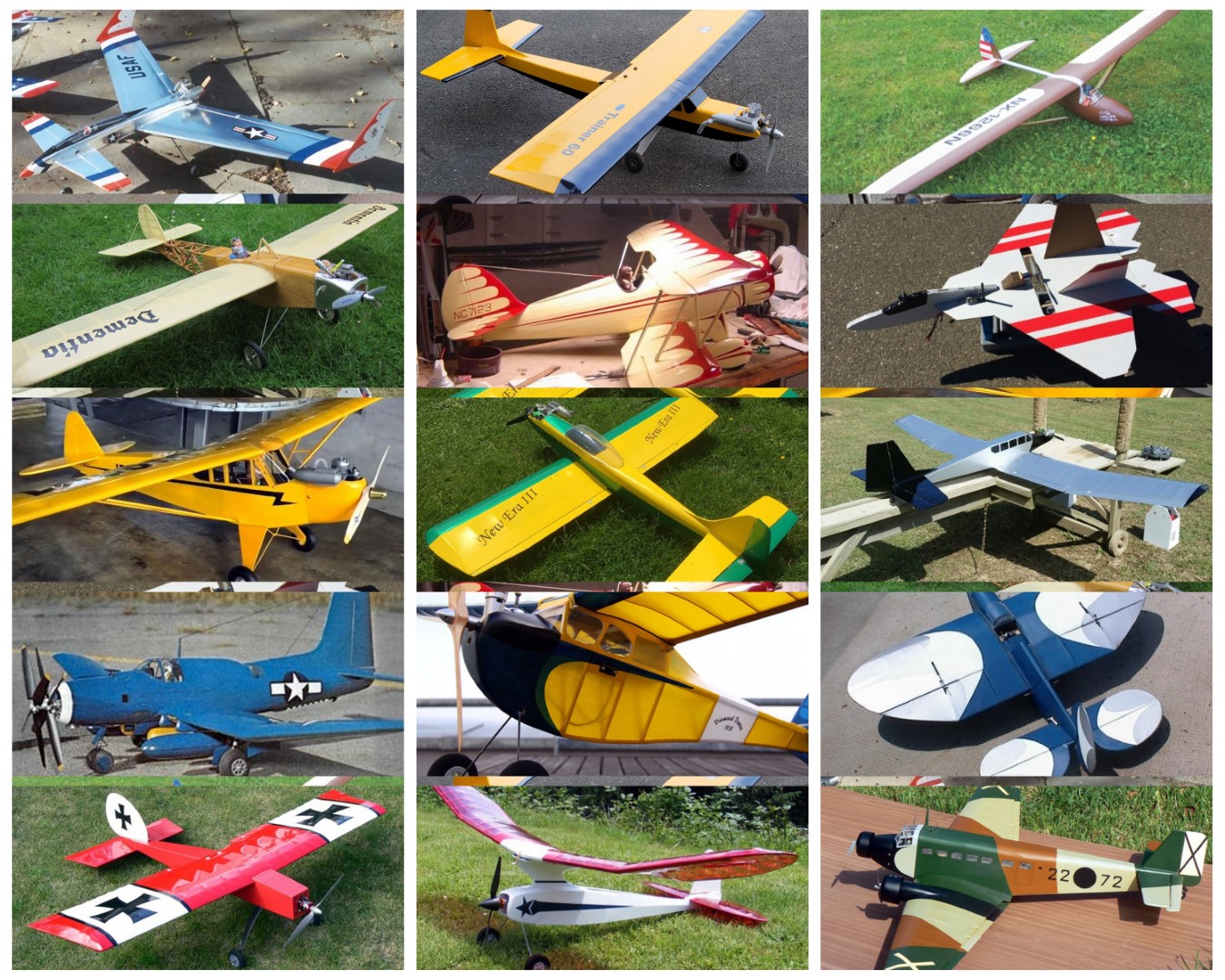

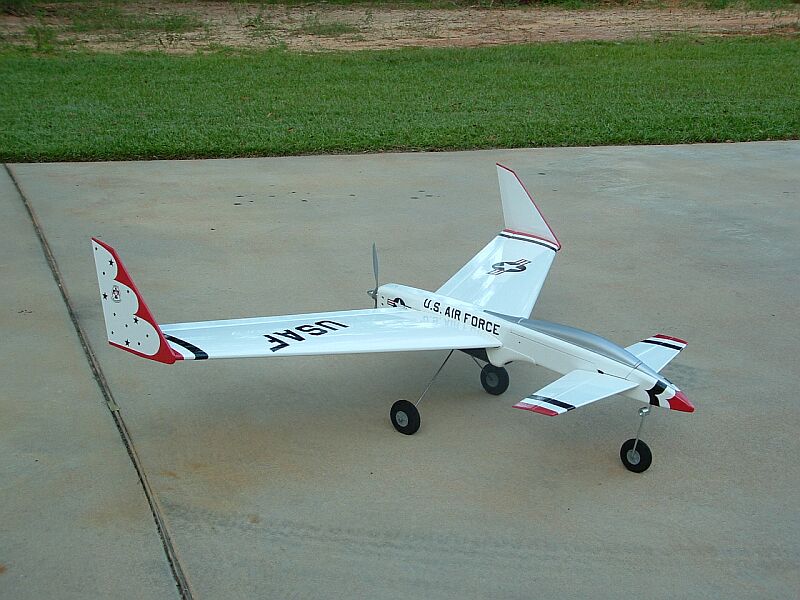
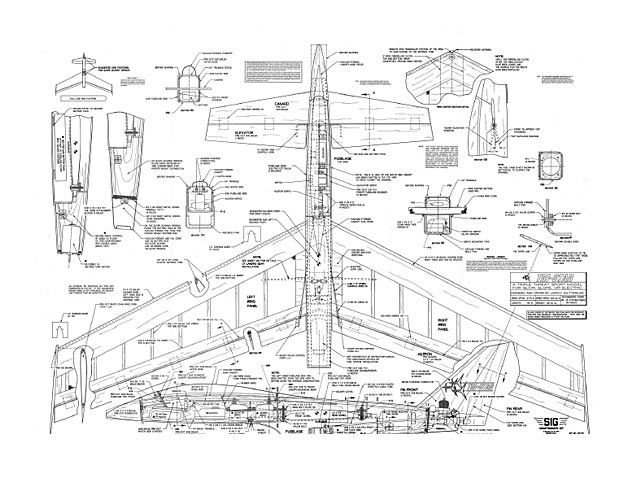
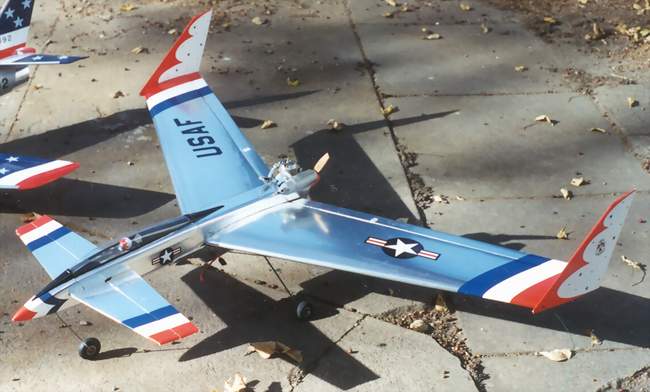
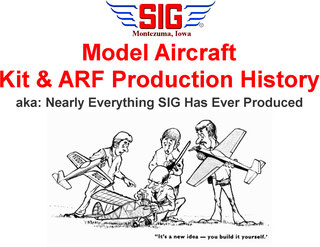



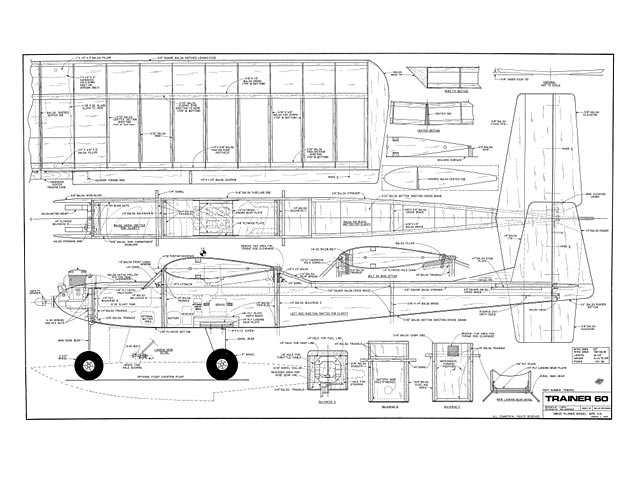
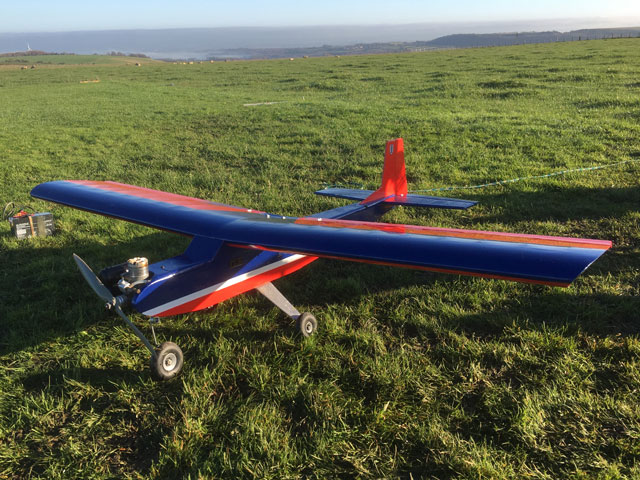
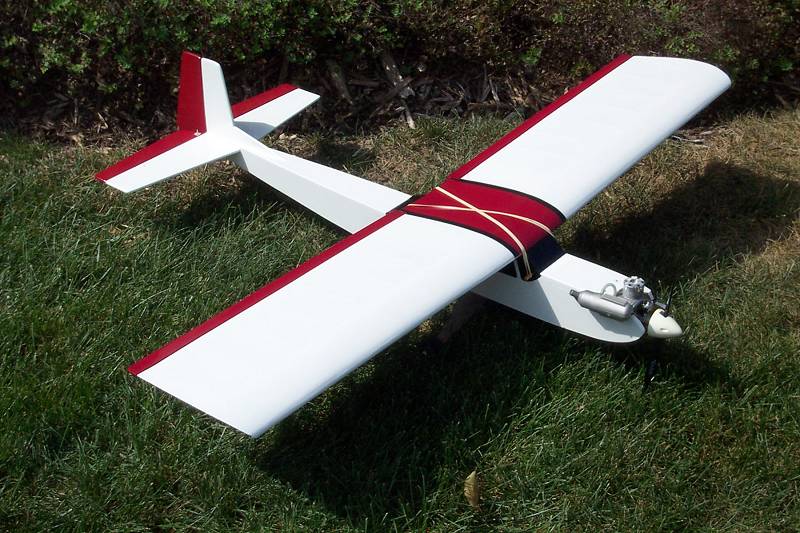
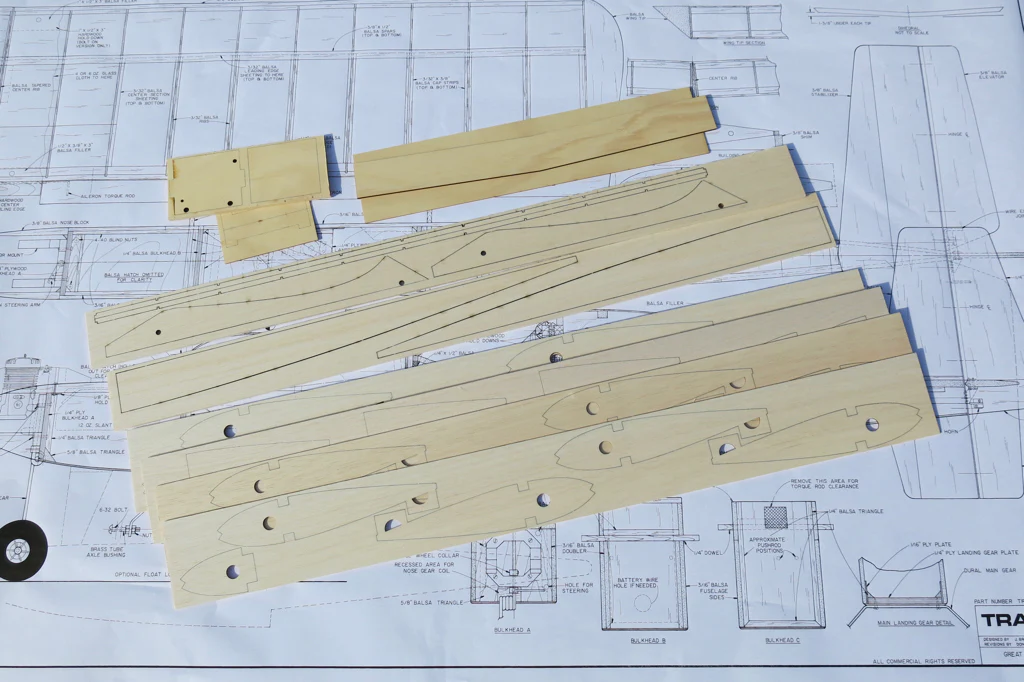

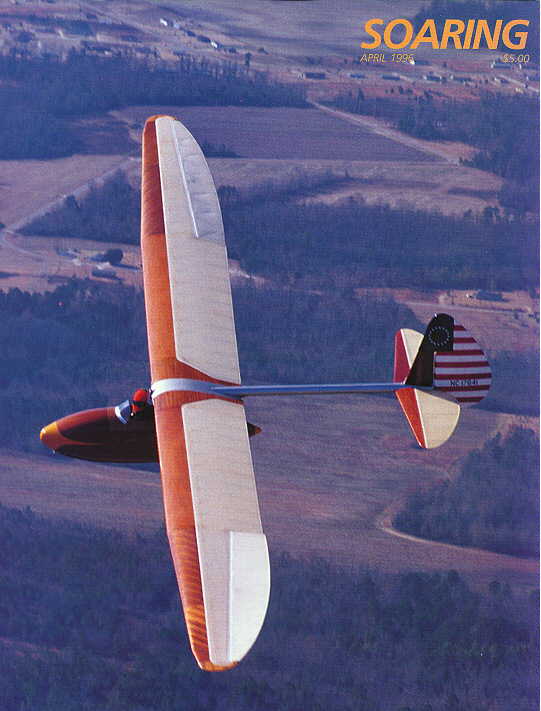

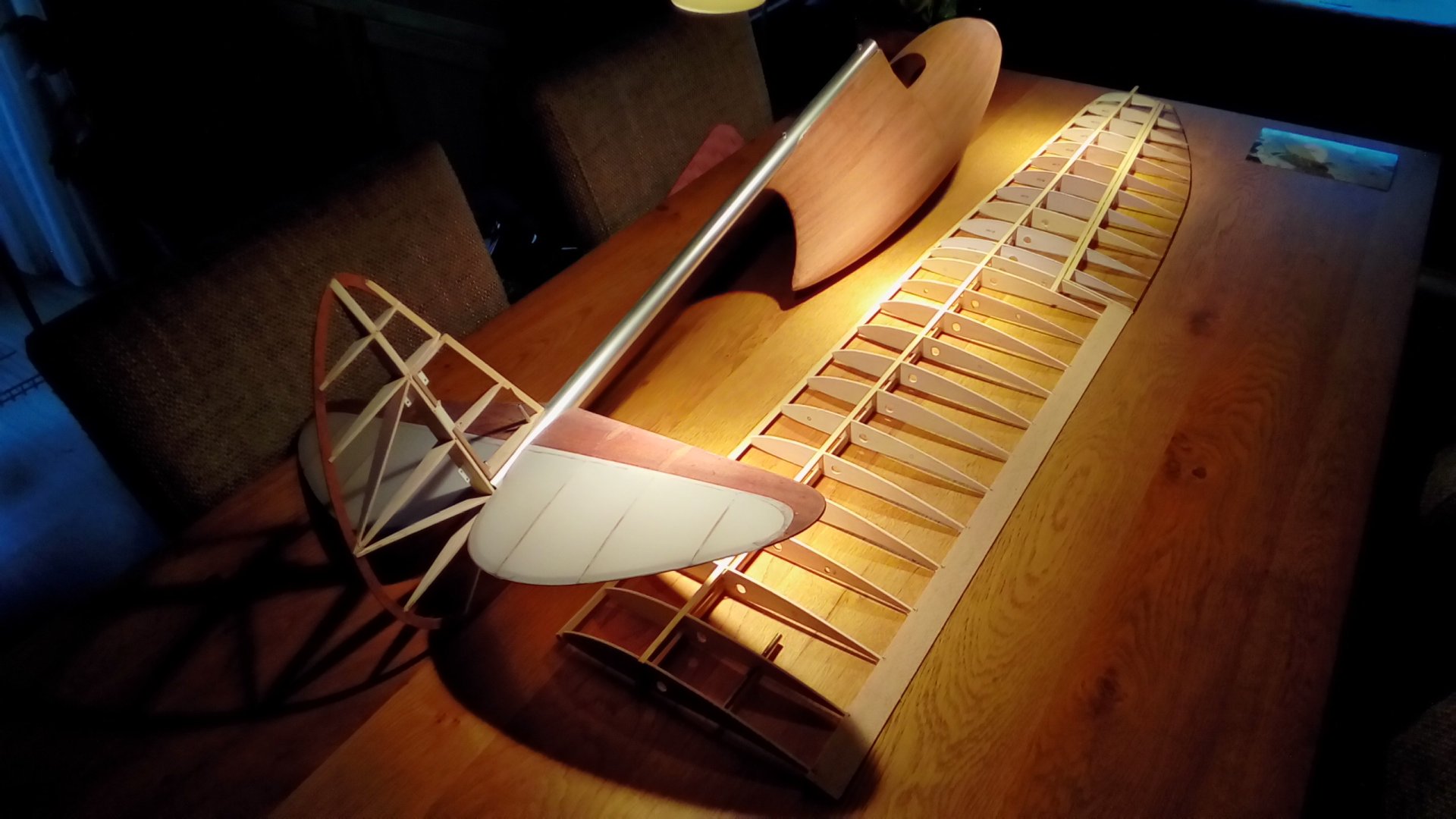
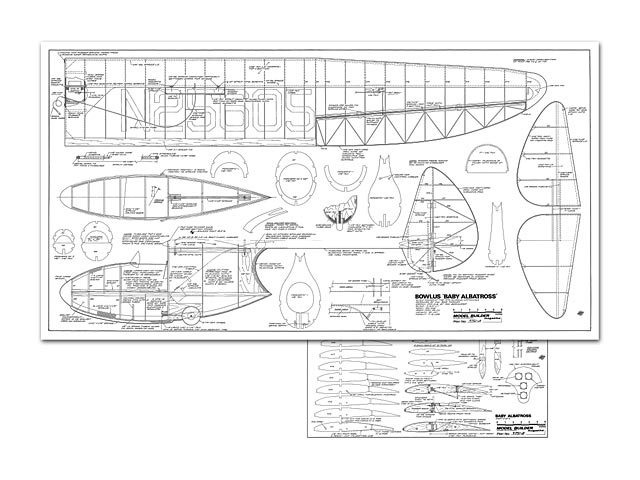
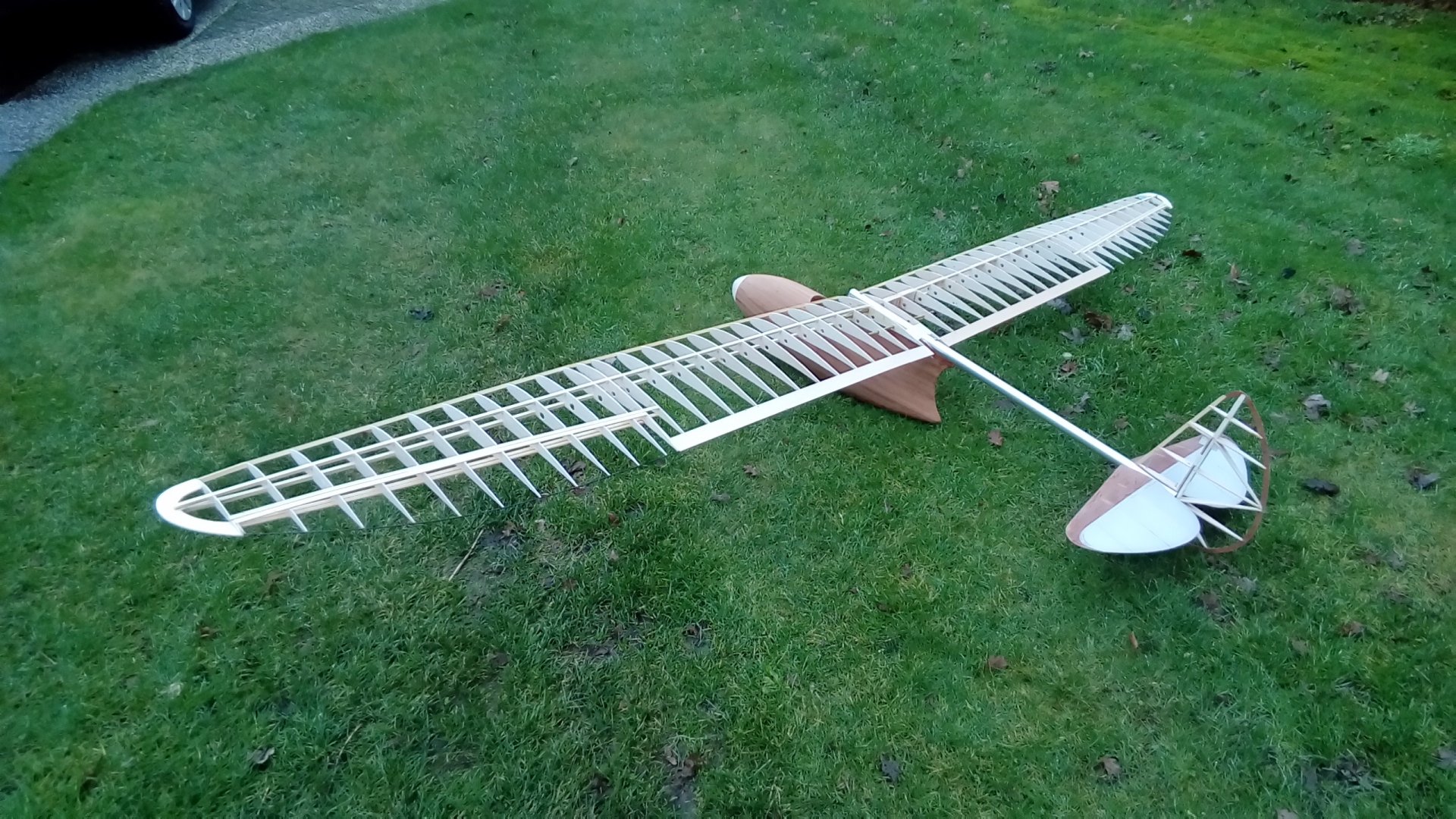
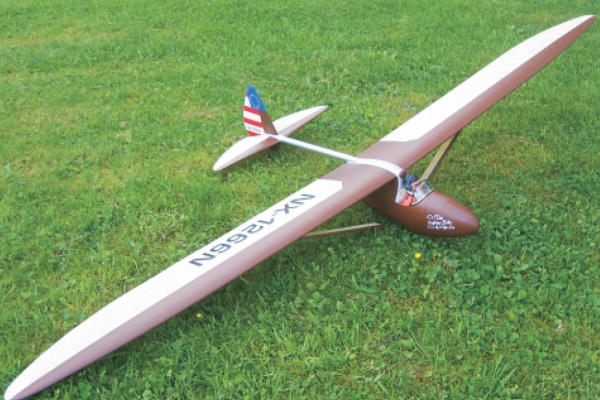

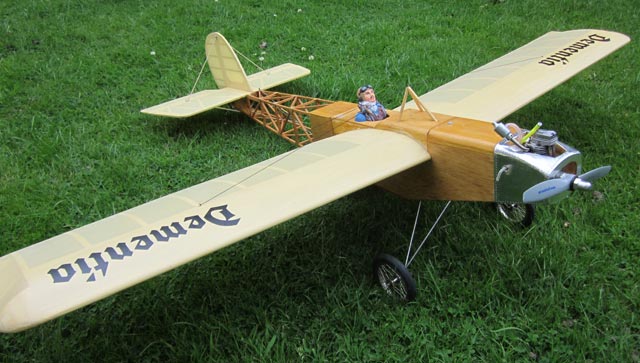


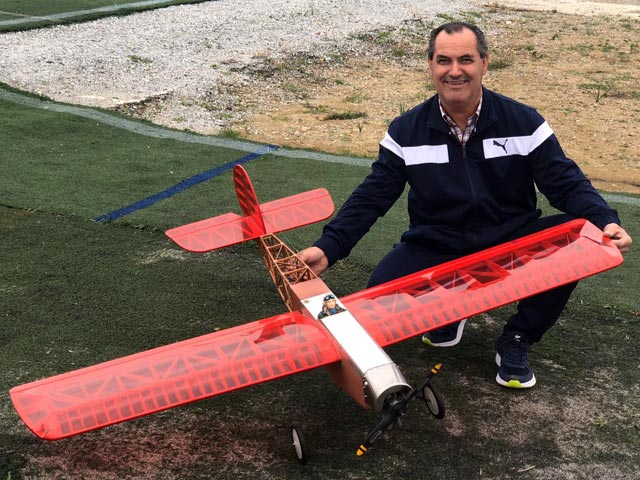
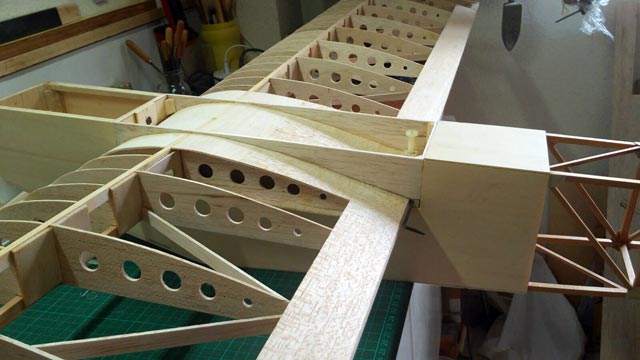

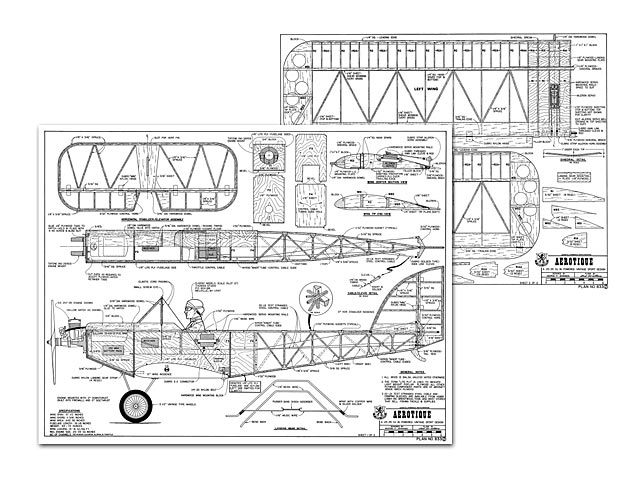
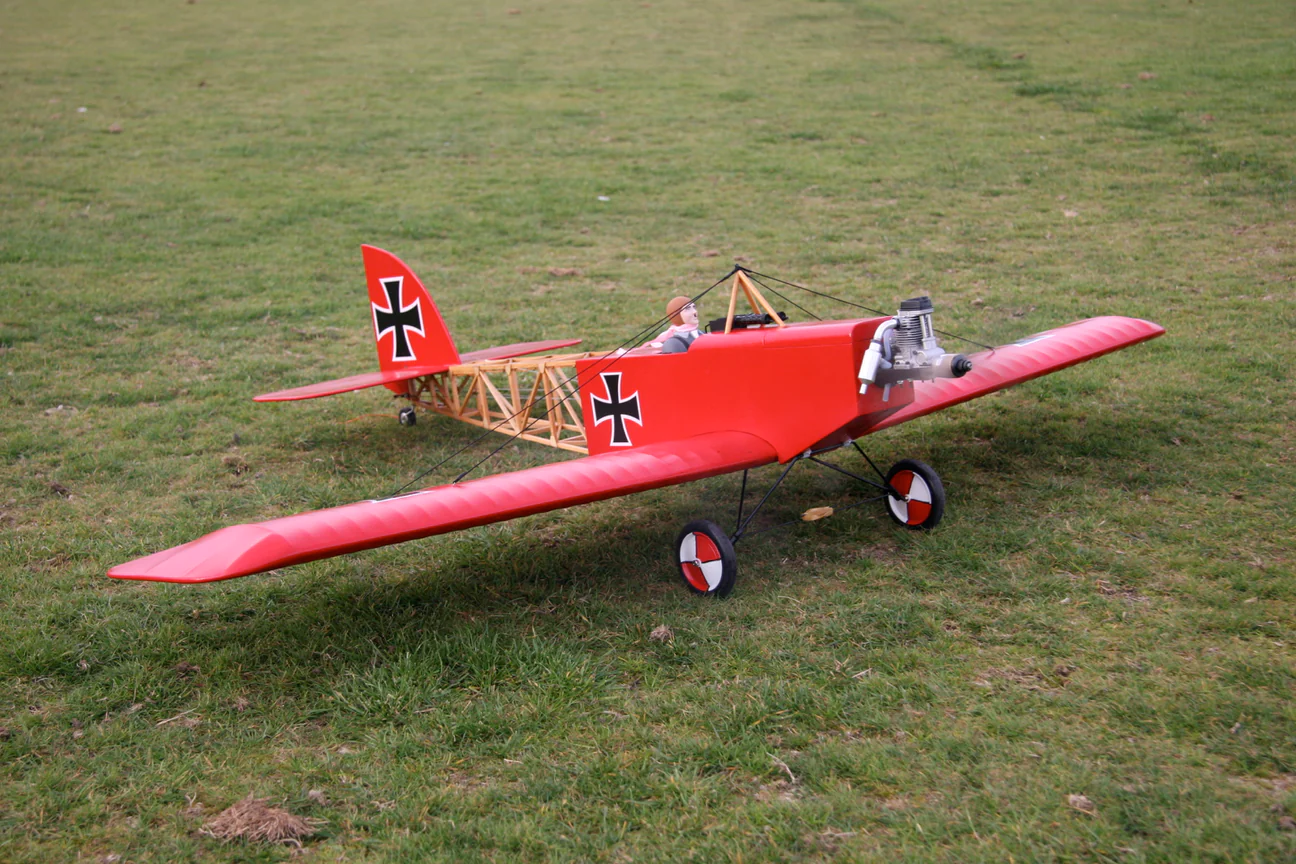
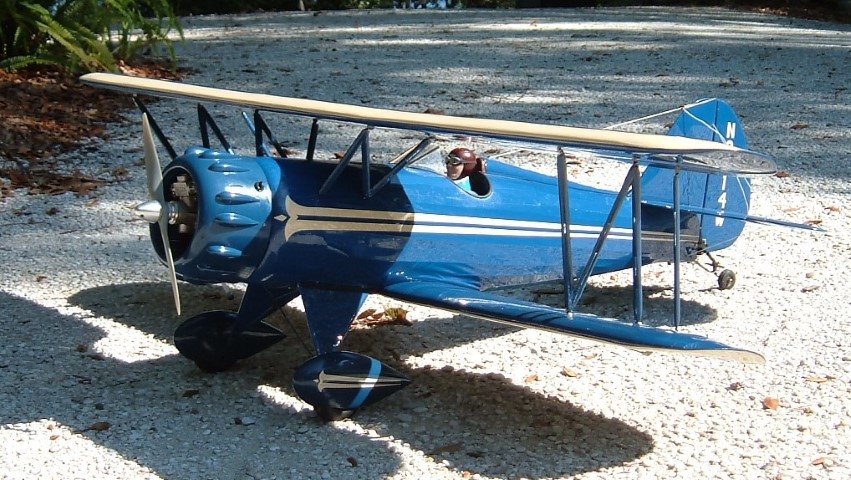
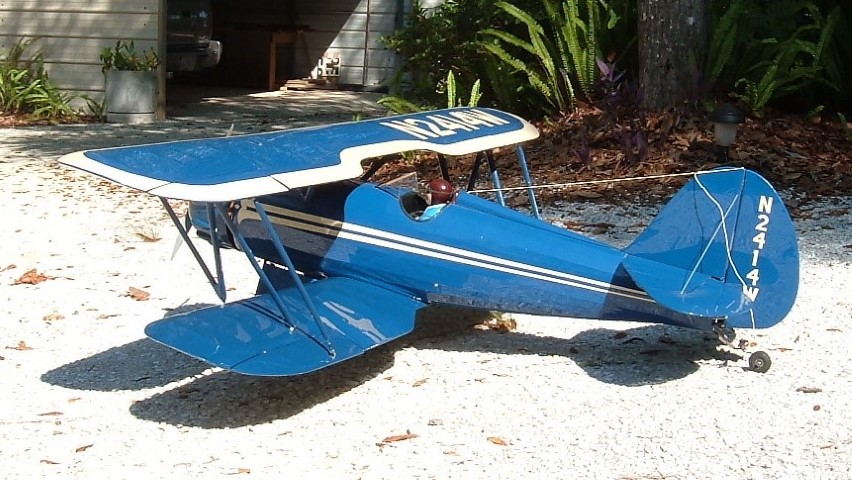

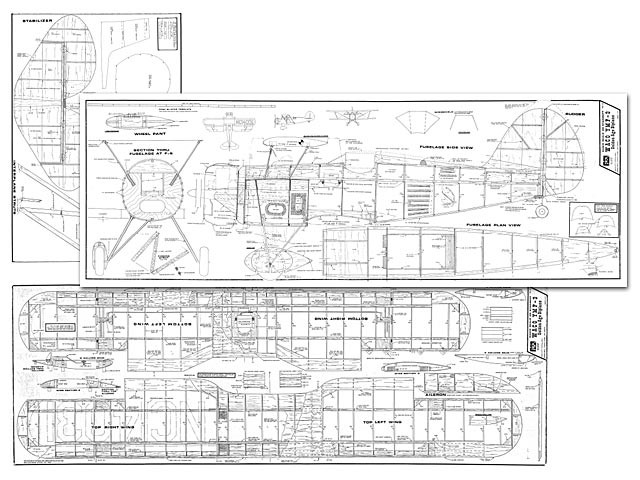
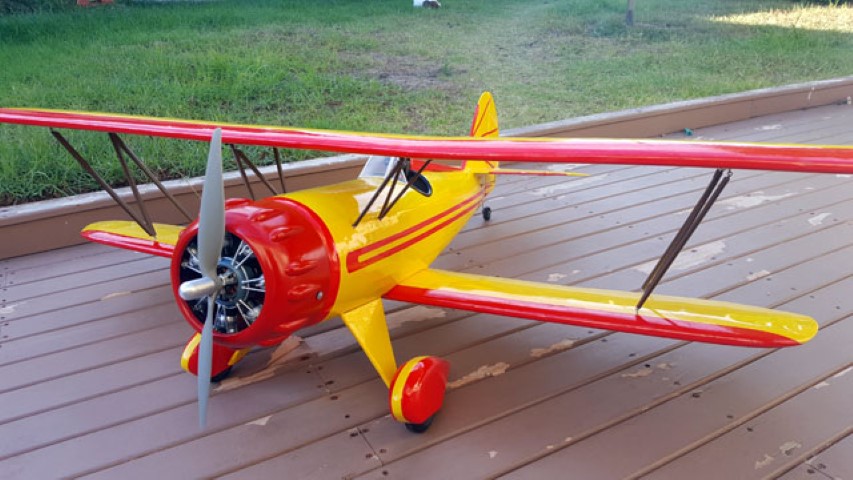
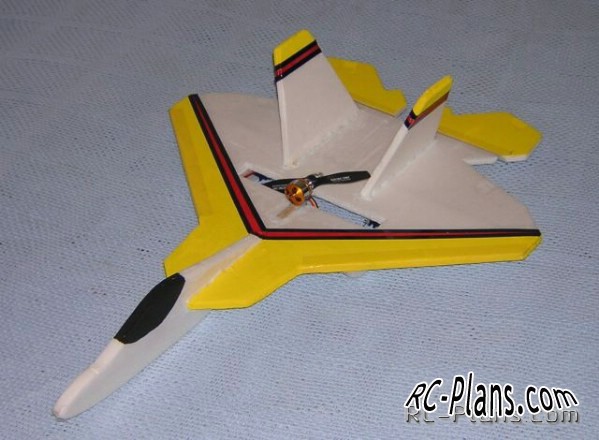

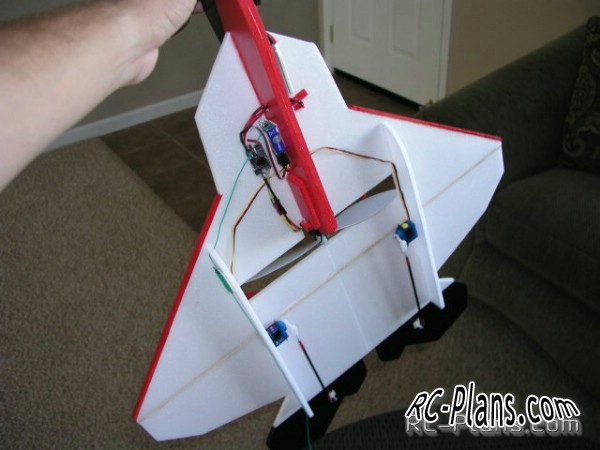
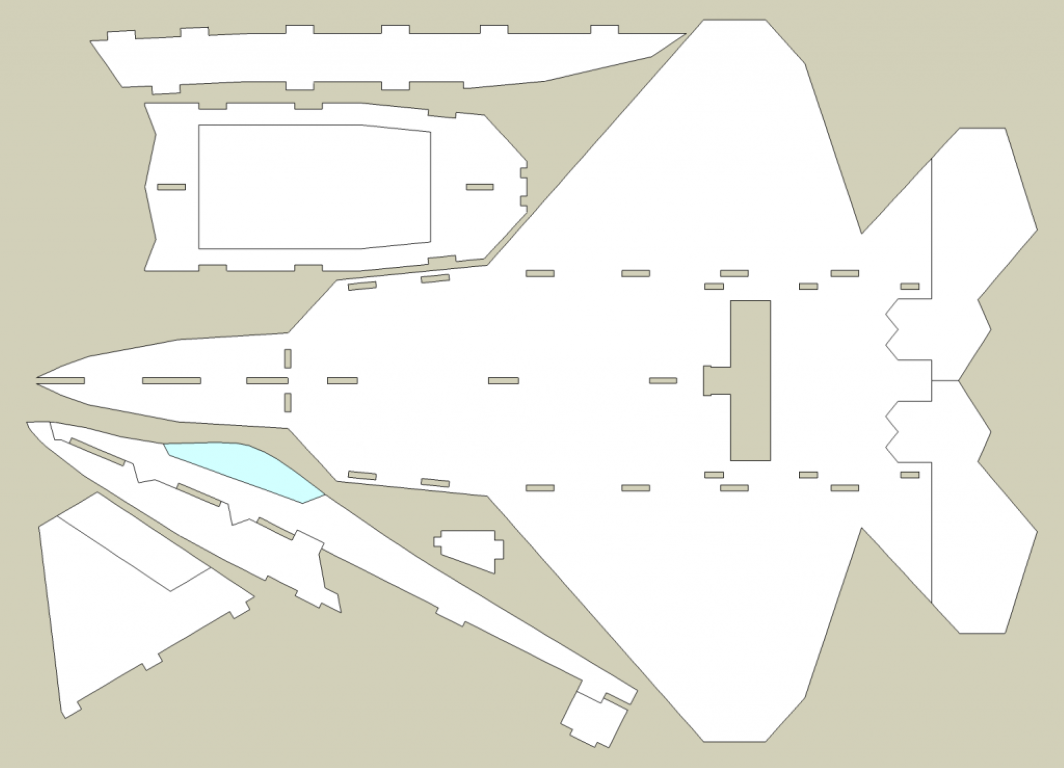







.jpg)
.jpg)
.jpg)
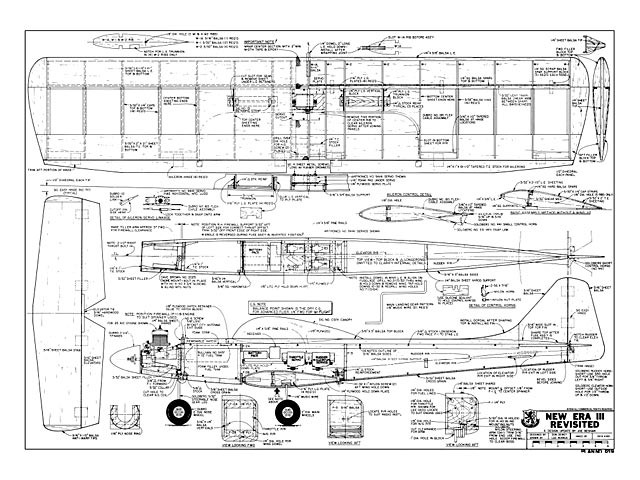

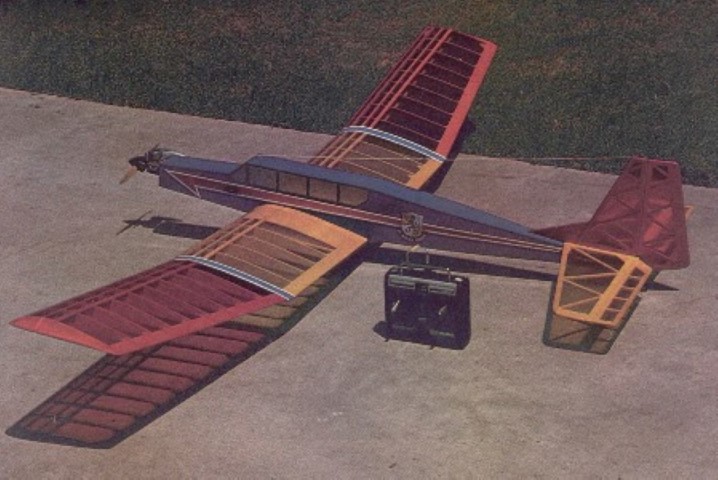

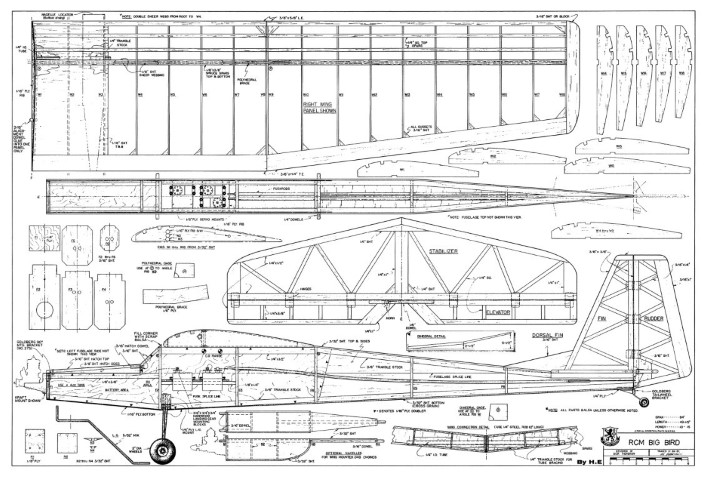
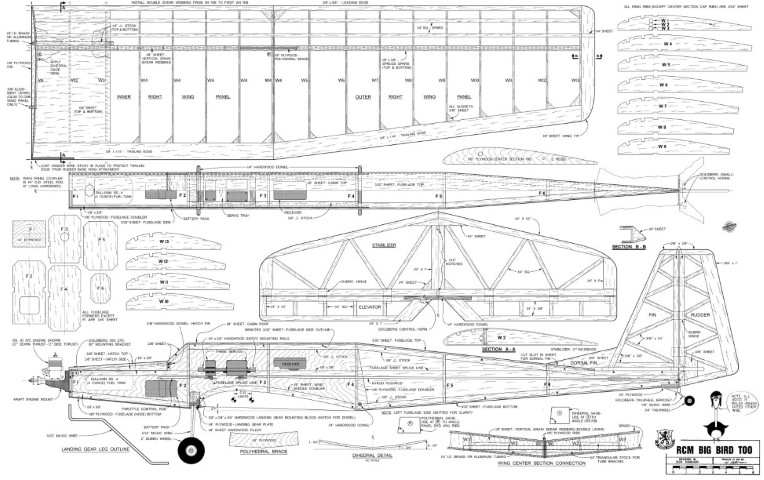
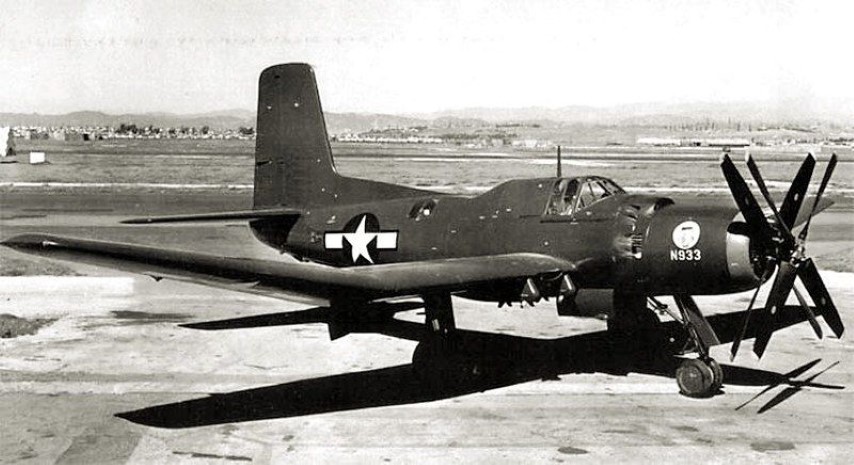
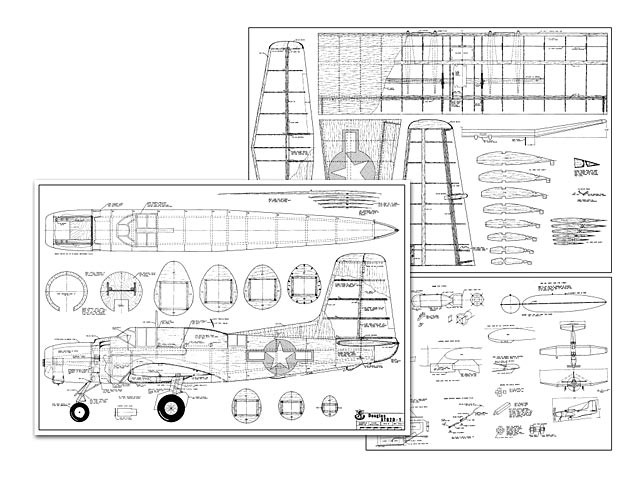
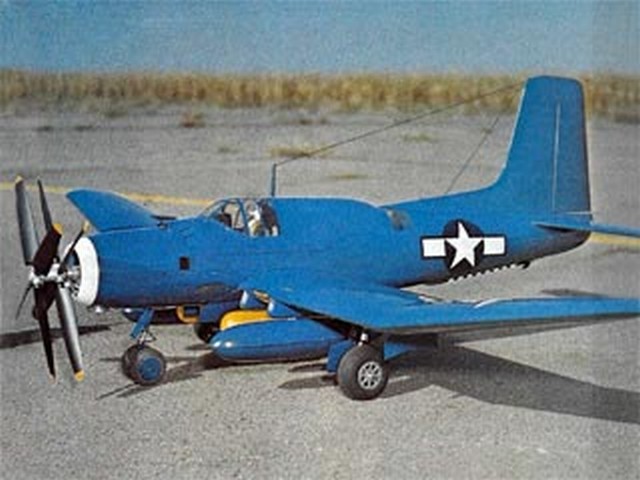

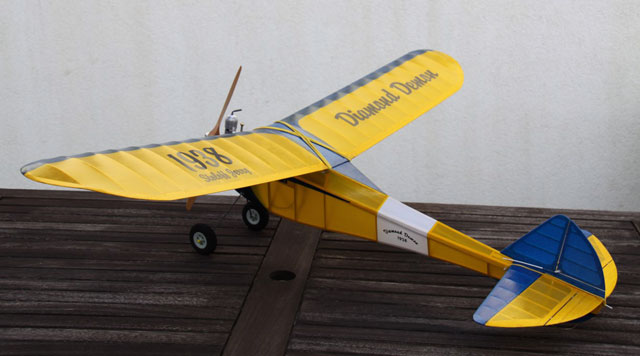
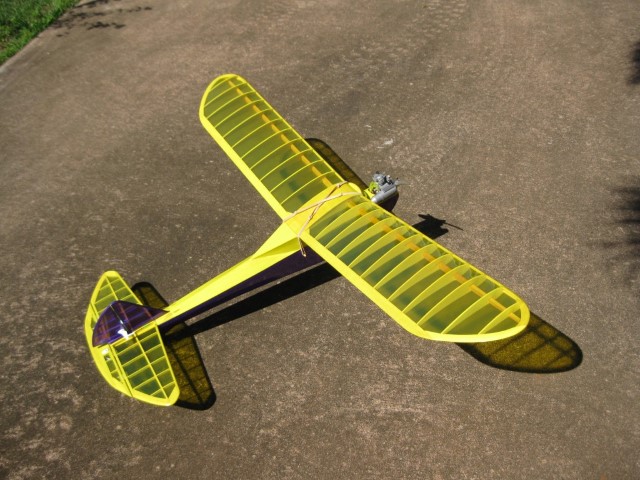
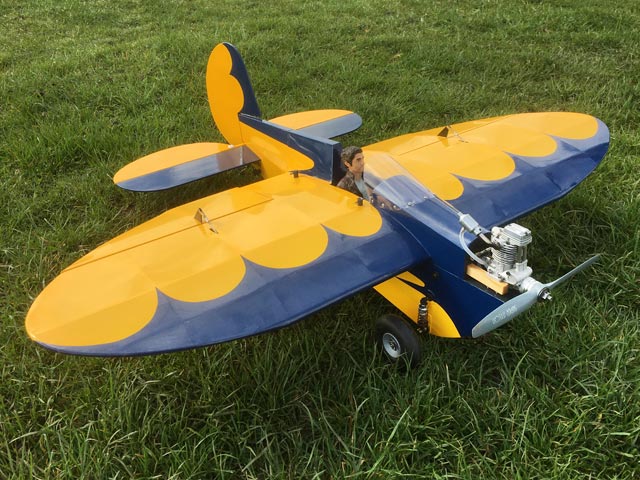
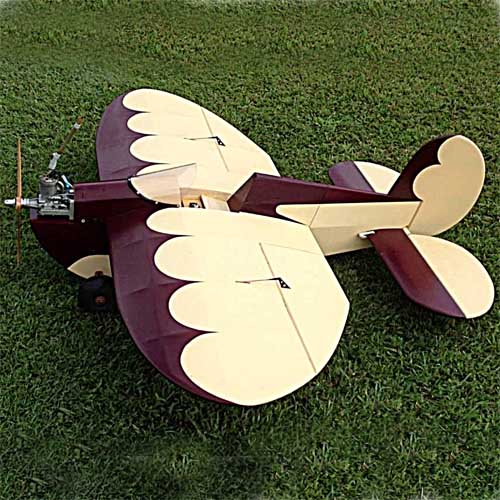

 All HTML & CSS Coded by Larry
All HTML & CSS Coded by Larry